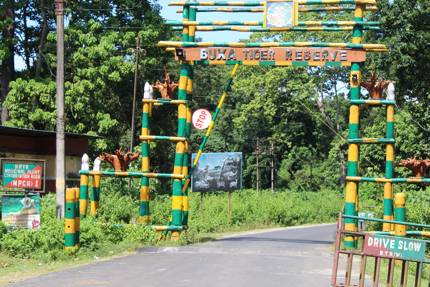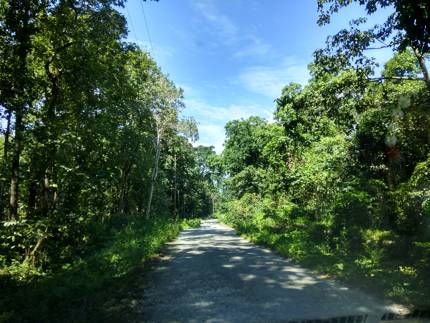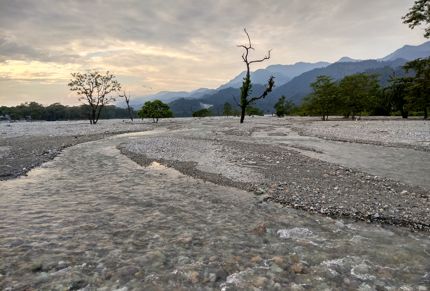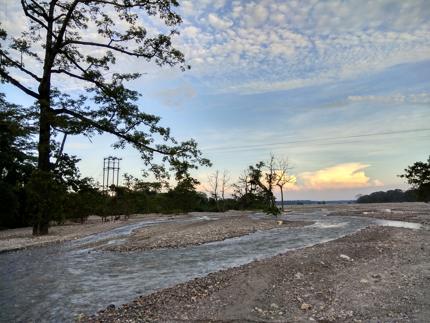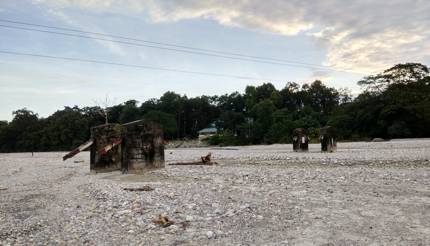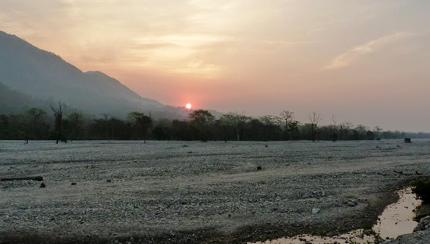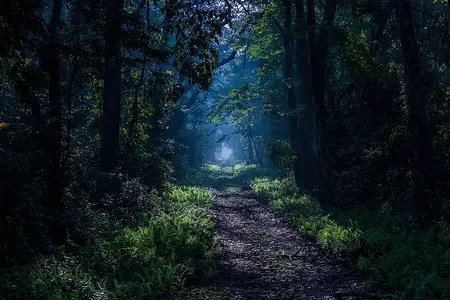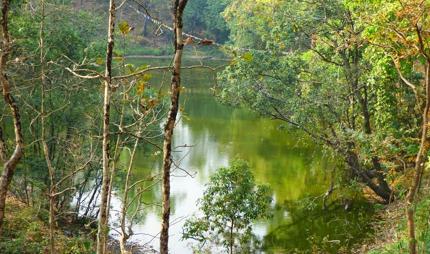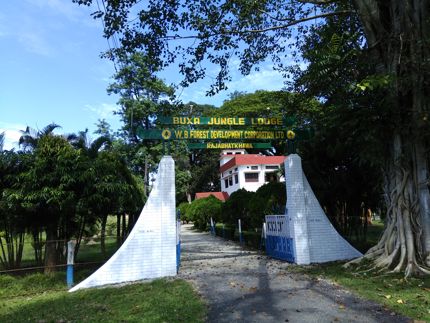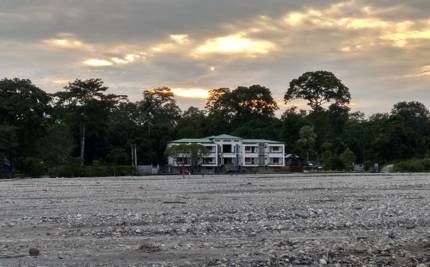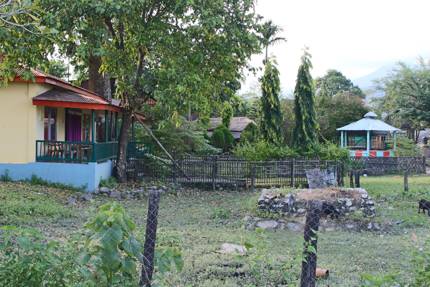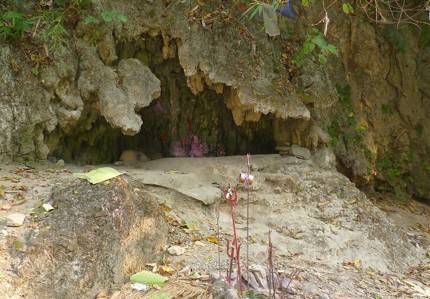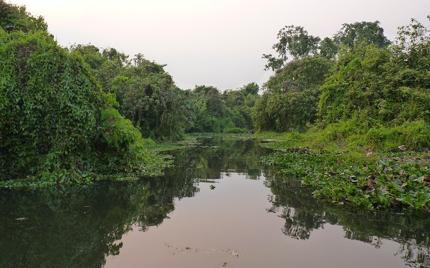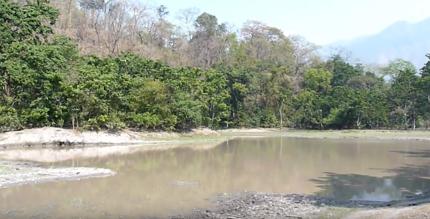Buxa Tiger Reserve & Jayanti
Although the name lures many tourists, tiger sighting in Buxa is actually quite rare these days. Not that tigers do not exist there at all.
Actually the large expanse of the jungle and highly dense sal forest provide a perfect hideout to the small number of tigers where they can prey & live escaping the human eyes.
Buxa Tiger Reserve is located at the north eastern corner of West Bengal at the foothill of lower Himalayas where the terrain varies from the landscape of lower plains to rugged hills full of dense forests of sal and simul trees interspersed with bamboo groves and shrubs of many kinds.
This is the largest forest in Dooars region covering an area of 759 square kilometers. In fact the northern part of the reserve extends to Phipsu Wildlife Sanctuary of Bhutan and hence the reserve has become part of a corridor for elephants to migrate between Bhutan and Dooars.
In 1983 Buxa was declared as a Tiger Reserve. The number of tigers in Buxa was found to be second highest in West Bengal after Sundarbans. In 1992 due to its extensive bio-diversity the reserve was given the status of a National Park.
Although some newspapers reported that number of tigers here have diminished to zero from 20, some recent study on animal stool (conducted first time in eastern India) showed that tigers are still present in the forest of Buxa - there are minimum 15 tigers which are likely to be still present at Buxa Tiger Reserve.
Main entry to Buxa Tiger Reserve is at a place known as Rajabhatkhawa - a small settlement at the fringe of the reserve. The name in Bengali means the place where the King (i.e. Raja) would take his meals (bhat khawa).
The folklore here says that the King of Coochbihar once used to come at the forest here for picnics... and hence the name.
Entry Gate to Buxa Reserve at Rajabhatkhawa
You need to buy entry tickets at Rajabhatkhawa (both for vehicle and travelers). From here a smooth tarred road enters the forest (known as Buxa Road) and leads to the core forest area. Soon after we entered the forest we heard the sounds of crickets.
Forests are dark inside and the insects perhaps mistake that to be nighttime and produce the sound even during daytime... amazing. We were told by our driver Kiron that wild elephant sighting on this route is quite common. But we were not lucky.
Driving through Buxa Tiger Reserve
About 10kms from the entry gate at Rakabhatkhawa, you will reach a small crossing (known as Buxa More)... the road straight ahead leads to a small village known as Samtalabari and then a trail continues from there up to the foothill where a steep uphill trek route starts and leads to the historic Buxa Fort.
The trek route further continues through Sinchula Pass all the way to Bhutan. Other than scenic trekking trail to Buxa Fort, there are several other trekking trails that originate from Buxa Fort. If you want to know about the trek to Buxa Fort and beyond, then read
Treks to Buxa fort and beyond.
But for now we will take the right turn at Buxa more and head towards Jayanti. Jayanti is a village settlement hat has developed along the bank of River Jayanti and is part of Buxa reserve. From Buxa more it is about 5kms away.
Along the way you need to cross the Bala river. There used to be a bridge here, but it collapsed and you can now see the pillars on the river. There is an attempt to rebuild the bridge. But for now you need to just drive across the river.
Most times of the year the river doesn't have much water and a vehicle can easily cross over. However in monsoon when the river is full, Jayanti often gets isolated from rest of Buxa. We spotted a barking deer by the riverside here.
Jayanti riverbed and the views
Jayanti market is a typical village bazaar. The people of Buxa are mostly of tribal origin and includes Rava, Garo, Mechia, Santhal, Rajbanshi, Nepali, Bhutia etc. There are 38 forest villages within Buxa reserve.
The people here mostly depend on the forests for timber, firewood, cattle grazing etc. Nowadays Eco Tourism has become quite popular here and villagers are adopting this for living.
There are now several (around 20) trained Eco Tourism guides here. Several private lodges and home stays have come up in Buxa Reserve particularly in Jayanti area.
The main attraction in Jayanti is the picturesque Jayanti River. Other than in monsoon there is hardly any water in the river. The riverbed full of boulders is exposed and there are only few thin threads of water that flow on the riverbed which are ideal for wading on and freshening up.
On the other side of the river is Bhutan hills and extension of the forest of Buxa Tiger Reserve. With the backdrop of Bhutan hills, the dense forest and meandering river, the place looks heavenly.
Jayanti river - another view
In fact large vehicles like Sumos, Gypsies and Jeeps can cross over the riverbed and take you to the other side to
Chunia Watchtower. Earlier they used to allow your own vehicle for the Chunia watchtower visit if you took a local guide.
But these days they ask you to take one of their vehicles... after all they are now more involved with Eco Tourism and would like to earn their living out of it.
There are two distinct and unforgettable landmarks in Jayanti -
1) A large patch on Bhutan hills on the other side of the river is devoid of trees... looks like a large mark of wound on the hills,
2) The other is the iron frames of a damaged bridge rising from the riverbed. I still remember having spent a romantic evening with friends on the river sitting on top of the frames. That was many years back.
Remains of the bridge on Jayanti river
There was a time when dolomite extraction used to take place from the hills around Buxa. However when Buxa was declared as a Tiger Reserve in 1983, the extraction work came to an end.
Those days there used to be a bungalow of North Bengal Dolomite Company here. A devastating flood had swept away the bungalow. Jayanti river now flows through its grounds.
The Jeep Safaris in Buxa Tiger Reserve takes place from Jayanti. While day visits to Jayanti are common with tourists, many visitors prefer to stay at Jayanti because of its lovely views of the river and Bhutan hills and also to avail multiple trips of safaris.
If you ever stay at Jayanti, I am sure you will remember the view of sunrise across the Jayanti river for a long time.
Sunrise across Jayanti river
Other than the rare tigers, some of the common wildlife that can be found in Buxa includes elephants (which are plenty in number), bisons (also known as Gaurs), deers of various types including spotted deer, barking deer, sambar, hog deer etc.
And there are wild dogs, jackals, hyenas, giant squirrels, porcupine, and of course leopards and several other wild cats like fishing cats, jungle cats etc.
There are also land tortoises and venomous snakes such as pythons and cobras. Marble cat, black necked crane and Clouded Himalayan leopards are native to Buxa and North East India.
There are wide varieties of plantations here including flowering Orchids (over 150 types of orchids can be seen here), ferns, sal trees, simul, different types of bamboo, shrubs, grass etc.
In fact Buxa reserve comprises of over 1,000 different flowering plantations and 8 different types of forests including Riverine forest, Sal forest, Semi & Evergreen forests, Dry & Wet Mixed forests etc.
And there are plethora of birds in Buxa including migratory birds which can be mostly seen in winters. The Narathali Lake which is open to tourists in winter, is visited by numerous types of migratory birds such as Common Teal, Gargani Teal, Large Whistling Teal, White Eyed Poachared etc.
You can also find birds like Goosanders, Ibis Bill, Fork-tails, Red-stars, Wag-tails etc by the river banks of Jayanti and Raidak rivers. Sighting of Greater Pied Hornbills are also common here. In monsoons you can find plenty of Minivets and Sultans, and in summer even the rare Ashy minivet.
If you are targeting to spot tigers at Buxa, you will most likely be disappointed though. The dense jungles here are act as natural hindrances to sight wildlife anyway.
However a visit to Buxa reserve is worth just experiencing the jungle itself and its serene beauty with lush greenery, vegetation and stray wildlife that come along the way... it' a different feeling all together.
Several safaris take place at Buxa from Jayanti area. However as I had already mentioned, the main gate for entry to Buxa Reserve is at Rajabhatkhawa where entry tickets needs to be purchased for both your vehicle, driver and individual tourists.
Entry cost is Rs. 250/- for the vehicle along with driver, and Rs. 50/- each for the travelers (Fare updated: March 2022).
Safari permits are issued and guides are available at the Jayanti Range Office located at Jayanti Market area. While you can use your own vehicle for the safaris (if it is suitable ... jeep type petrol driven car), you can also book a Gypsy here for the safari.
The forest department does not own vehicles.... they have arrangements through local persons. Guides are also locals who have been trained.
Here are the main safaris at Buxa Tiger Reserve (note that there is no elephant safari here):
Jeep Safari at Buxa
This involves a total of 17kms of Jeep safari through the jungle routes. The entry gate for the Jeep safari is located near the range office at Jayanti Bazaar area. As we entered, we were soon driving through a dense jungle route of tall Sal forest.
We first came to a water body ... few spotted deers were casually roaming around there. Further ahead we reached a grassy land. We waited here for a while, and moved on and crossed another grassy land and a water body.
Jeep safari at Buxa Tiger Reserve
Photo: Ssandipchatterjee2016, cc by-sa 4.0
We finally reached a place called 26th mile. On our way back the guide took us to Bala river. We walked a little down the slope towards the river. And there was a huge elephant on the river bank at a distance and further away a couple of large bisons.
Awestruck, we spent some time here in silence. It was time to head back. Earlier on our way through the jungle, the guide had sprinkled some salt at the second water body... he mentioned that this could attract some animals.
And now on our way back we saw a large bison standing there.... it was licking salt and now looking at us - the intruders.
Safari Timings
Morning 6am to 11am; Afternoon 2pm to 6pm.
Note that only limited number of vehicles are allowed entry. So on-the-spot booking can be difficult, particularly in high tourist season. So night stay in Buxa should be planned.
Alternatively or additionally you can visit
Chunia and Bhutia Basti Watchtowers located across Jayanti river and part of Buxa Tiger Reserve. It is easier to organize a safari in the forest here.
Cost of Jeep Safari (Fare updated: March 2022)
If you book the full Jeep along with a guide, it will cost around Rs. 1800/- including permits and guide fee. If you book through a local contact person, you can negotiate.
Chunia Watchtower Safari
Chunia Watchtower is located on the other side of the river Jayanti and you need to cross the river bed with the vehicle to enter the forest. It is in Buxa reserve buffer zone and animals such as elephants, leopards, bisons, deers, wild dogs, wild boars etc can be seen here.
You can book the safari at the Range Office in Jayanti or through your lodge (if you are staying at Jayanti). The main attractions here includes crossing over the rocky riverbed with lovely views of Bhutan hills, visiting two watchtowers inside the forest - Chunia Watchtower and BB Watchtower.
Pokhri Hill
Pokhri in local language means a lake. So it's a hill which has a lake on top. The car goes up to 4kms from Jayanti through dense forest and then it involves a 1.2km uphill trek to an altitude of 1,100ft. The trek route passes through dense serene forest.
Along the way you can see Orchids & other flowering plants and get excellent views of river Jayanti. The Pokhri Lake and the wetland around is considered sacred by the Buddhist and local tribal community.
There are lots of cat fish and turtles in the lake and you can feed them. You can see the frenzy of the fish in water as they feed.
Pokhri Lake on Pokhri Hill
You can take your own vehicle up to the foothill and then hike. If you take a guide, pay only for the guide fee (Rs. 300/- per guide per vehicle). Otherwise take a forest department approved vehicle and a guide from the Forest Range Office at Jayanti.
TGN Watch Tower
3kms from Jayanti towards Pokhri hill and deep inside the forest there is a watchtower (known as TGN Watchtower) and next to it is a small circular waterhole surrounded by lush green forest.
The view from the tower is simply awesome and if lucky, you can also spot some wildlife from the tower. You can visit TGN Tower between 6am to 4pm (however the route is closed between 11am to 1pm). Guide charge is Rs. 150/-. You can take your own vehicle.
The main railway station nearby is at Alipurduar which is 11kms away from Rajabhatkhawa (where the Buxa entry gate is located).
You can take a taxi or an auto rickshaw from Alipurduar to easily get to Rajabhatkhawa (in about 15 minutes) or Jayanti which is further 15kms away. Buses also ply between Alipuduar and Jayanti market and you can get off at Rajabhatkhawa if you want.
There is a small railway station at Rajabhatkhawa as well. But regular express trains do not stop here. There are passenger trains that operate between Siliguri and Alipurduar with stoppage at Rajabhatkhawa. This is a good option for low budget travelers.
If you are approaching Buxa from Jaldapara by road, the road distance is 37kms and it takes about 1 hour 10 minutes to reach. You can also drive down to Buxa from New Jalpaiguri (NJP) railway station or Bagdogra airport (which is the nearest airport).
It takes about 4 hours from NJP (160kms) and 4.5 hours from Bagdogra airport (172kms) by car or private taxi to reach Rajabhatkhawa entry gate.
Go through
How to reach Dooars to get details about each option of reaching Buxa Tiger Reserve.
A recent count showed that there are 69 privately operated lodges plus several run by the state forest department. In September 2017 an order was issued by The National Green Tribunal in Kolkata to close down all such lodges in the reserve due to pollution and impact on conservation of wildlife.
Although the lodges continue to operate defying the order, an uncertainty looms over their future existence. And that is clearly seen in service and maintenance as they operate on minimum resources.
There are several stay options at Rajabhatkhawa including
Buxa Jungle Lodge operated by WBFDC (i.e. West Bengal Forest Development Corporation) located quite close to the entry gate.
It has a nice lawn and lush green surroundings with rooms in three sections. The newer sections made in a bungalow style have large common balconies in front overlooking the gardens. Rooms have amenities such as AC, TV, attached bath etc.
There is a common dining room. This is undoubtedly the best stay option in Buxa. You can book a room by visiting the WBFDC office at Salt Lake, Kolkata.
Entry Gate, Buxa Jungle Lodge
There is also a nice homestay at Rajabhatkhawa forest village known as Humro Home run by a local villager. There are five basic rooms in a bungalow style wooden building which are clean. The rooms do not have AC, but they have attached bath with geysers.
It's set up in several acres of land. You can walk around in the gardens and beyond at the farmland or watch the scenic views of forest and Bhutan hills from the veranda.
This is a nice budget accommodation. The booking is taken by the online travel company Nature Beyond (Phone: 1800 123 3759).
Many tourists prefer to stay at Jayanti instead. There are two reasons for that... 1) You are close to Jayanti river and get marvelous view of the river and Bhutan hills, 2) The entry gate for Buxa safari and Forest Range Office for getting permits are located at Jayanti.
However there are two shortcomings as well...
1) The fate of the lodges within Buxa reserve including in Jayanti is dwindling as the court order has been issued to close them down;
2) Staying would require that you purchase entry tickets every day when you go out of Rajabhatkhawa main entry gate and return. This will add to the cost of stay.
There is a Rest House operated by Forest Department which is located right on the Jayanti river bank. This rest house offers breathtaking view of the river, Bhutan hills at a distance and the surrounding forests.
The rest house has been recently renovated. It was earlier little away from the river. But due to change in river course, it now stands right on the river bank.
Forest Department Rest House on Jayanti river
You can book the Jayanti rest house through the Divisional Manager, Buxa (Logging) Division, West Bengal Forest Development Corporation, Alipurduar. Phone: (03564) 255004
There are several private lodges that have come up at Jayanti village.. most are budget options, basic and not of great quality. One which is most popular here is Banante Resort - a budget accommodation. It's located right next to river Jayanti.
Since a high embankment has been built to prevent the river from flooding or eroding, the river is not directly visible from the lodge. The lodge is setup in a nice garden setting with cottage like rooms. There are standard and deluxe rooms with attached bath, but no AC.
They can arrange for safaris. Phone: +91 9609931857 / 9230543807.
Banante Resort at Jayanti
TIP: Even if you make a day trip to Jayanti, it can be a good idea to plan your lunch at Banante Resort. Their dining is usually open to outside guests as well. However don't be late or else the food might be over.
They serve typical Bengali type meals (rice, dal, alu bhaja, little shabji, then a choice of fish, chicken or eggs, followed by chutni, papad). Food is simple and nice. There was a Shabji which they made with fish-head... I found it a bit smelly, but others liked it.
UPDATE:
Jayanti area comes under the core area of Buxa reserve. Following a court order in September 2017 to vacate all commercial establishments such as lodges and eateries from within the core area of forests.
All accommodations and eateries at Jayanti area have been asked to close down and move outside the core forest area. Many have already closed down or operating with depleted resources. Sooner or later, none of these lodges will exist at Jayanti.
Another budget option is Rovers Inn at Jayanti. It's a 2-stories building located close to the river. It has 16 rooms - the standard rooms are downstairs and deluxe rooms are upstairs. From the veranda upstairs you get nice view of the river and Bhutan hills.
There is no AC in the rooms. There is an in-house restaurant and a garden cafe. Phone: +91 9434014233; 9434754349.
If you are the type who likes to embrace nature and explore the unknown, then a homestay in a quiet forest village known as sasafu would be a great place to spend a couple of nights.
It's located in a forest across the Jayanti river and on the opposite side of Jayanti settlement. There are only handful of villagers who live here in the company of nature and wildlife.
There are several wonderful places in and around Buxa. However if you are planning long walks particularly through jungle areas, then beware of leeches. Buxa reserve is well known for leeches and they can crawl up without you knowing it. Stopping blood oozing can be difficult. So be prepared.
Mahakal Cave
This is an ancient limestone cave and a place of worship for Lord Shiva located at the Bhutan hills. You can walk for 7kms along the Jayanti river bed and reach the cave on the hills. Thousands of pilgrims visit the cave during the pilgrimage season.
Note that there are actually two caves... Chota Mahakal which requires a shorter and easier trek, and Bara Mahakal which requires a steep and uphill trek from a point along the way to Chota Mahakal.
Chota Mahakal Cave
If you do not want to trek all the way from Jayanti village, you can take a car, drive along the Jayanti riverbed, crossover to the Bhutan side and then start your trek. This is what most tourists do.
Buxa Fort
This historic Buxa Fort can be approached from Santalabari (a village located about 15kms from Rajabhatkhawa and inside Buxa reserve). However after 3kms of motorable route from Santalabari, it requires a 2.5kms steep uphill trek to reach the fort.
The fort once belonged to the Bhutan king and later was seized by the British who used it to detain freedom fighters. You can only see the ruins today.
However the views from the trek route and the fort area are awesome... you get to see the lush forest, parts of terai (i.e. lower plains) and many streams flowing through lush vegetation.
Sikiajhora
This is a nice tourist spot and a picnic area located about 14kms from Rajabhatkhawa and takes about 30 minutes by car. The name of the place comes from its location next to the perennial Sikiajhora stream (jhora in local language means a stream).
This place is great for bird watching. There is also a bird watching tower here (although not very well maintained).
You can take a tour on a country boat here on a narrow channel (which is the Sikiajhora stream) and go deep inside the forest, watch birds, reptiles and sometimes even wildlife from the boat.
The feeling during the boat ride is quite eerie as you are very close to the forests on both sides of the channel and you can clearly hear the sounds of crickets, birds and even animals in complete silence.
While on the boat you will notice a wide opening in the bushes - this is an elephant corridor.
Boat ride at Sikiajhora
Local villagers navigate the boats using a long bamboo pole standing at the rear end of the boat. The boat tour lasts for about 30-40 minutes, it goes up to a point and returns.
Per person cost for the boat ride is Rs. 1000/-. There is only one boat... so you might need to wait for your turn.
Narathali Lake
This is a lake in a natural wetland surrounded by trees and attracts large number of migratory birds during winter including Goosander, Ibis Bill, Fork-Tails, Red-Stars, Wagtails etc. It is opened for two months in winter when tourist can visit the lake.
Narathali Lake
The lake is located in Bhutanghat area and about 45kms from Rajabhatkhawa and 32kms from Alipurduar.
Raimatang
This is a forest village which is part of Buxa Tiger Reserve and located at its western fringes. From Rajabhatkhawa it is about 20kms away and will take about 45 minutes to reach.
Along the way you will cross several lush tea gardens including Gangutia tea garden, Kalchini tea garden, Chuapara tea garden etc.
Finally you will reach the riverbed of Raimatang river, drive over the riverbed which is full of boulders (requires a large vehicle) and cross over to reach Raimatang Village.
Raimatang is surrounded by dense forest and is primarily meant for nature lovers. There is a watch tower here and elephant sighting from the tower is quite common.
You can also see a lot of butterflies at Raimatang particularly along the riverbed. You should stay here overnight to experience the true serenity of the place. There are a few home stays here.
Jaldapara National Park
This is one of the most popular national parks in Dooars where you can avail both elephant and jeep safaris, and spot some exotic wildlife including one-horned rhinos, elephants, leopards, gaurs, deers and lot more.
Madarihat where the entry gate of Jaldapara is located is only 1 hour 10 minutes away from Rajabhatkhawa by car. Read
Safaris at Jaldapara for detailed info.
June to September is the monsoon time and it rains very heavily during this time. Buxa Tiger Reserve remains closed between June 15th to September 15th due to monsoon and safaris do not take pace during this time.
There can be showers in late September or 1st week of October as well. Although October and November are good time to visit, shrubs, grass and trees get fully grown due to the prior monsoon. This reduces the visibility through the jungles and animal sighting is not easy.
The best time to visit Buxa is the winter time between December to February. Weather remains very pleasant during this time and safaris are very enjoyable.
March to May too is a good time to visit Buxa, but the temperature rises and it can get uncomfortable at times.
Note that average temperature varies from 12°C to 21°C between November to February, from 24°C to 27°C between March to April, from 27°C to 32°C between May to September, and from 24°C to 27°C in October.
Related Articles
|
Visitors' Reviews/Comments
Pritam Das (September 2023)
We need to do Buxa Core Jungle Safari. What is the procedure to book a safari? Is there any portal or website?
If I go to Rajabhatkhawa Forest Office on the same day, is it possible to book a safari? Does core safari take place by sharing with other persons? Thanks
Raj (darjeeling-tourism.com) September 2023
You need to first visit the ticket office next to the Rajabhatkhawa forest gate to buy entry tickets. Here you can ask for information about the Jeep safari. Presently, there is no option for booking Buxa jungle safari online.
Usually, you need to take your own vehicle, enter through the main forest gate and go down to Jayanti. The Jeep safari permits are usually issued at the Jayanti forest range office.
You will need to take a whole Jeep for the safari unless you can combine it with others. There is no shared ride option. Jeep safaris are held both in the mornings and afternoons.
Supratik Ghatak (May 2021)
I wish to enjoy the view of Jayanti River during monsoon. Which month will be safe to reach and stay there at the same time view Jayanti River in full flow? I would like to stay at WBFDC Buxa bungalow during the same trip. Please let me have your valued opinion.
Raj (darjeeling-tourism.com) May 2021
You can go any time from late June to early September which is the peak monsoon season. Safaris won't take place around this time but you can go up to Jayanti river. However note that unlike other rivers in Dooars, Jayanti is seldom seen full even during monsoon... there will likely be some sections of exposed riverbeds at places, but the sight is wonderful anyway.
|
